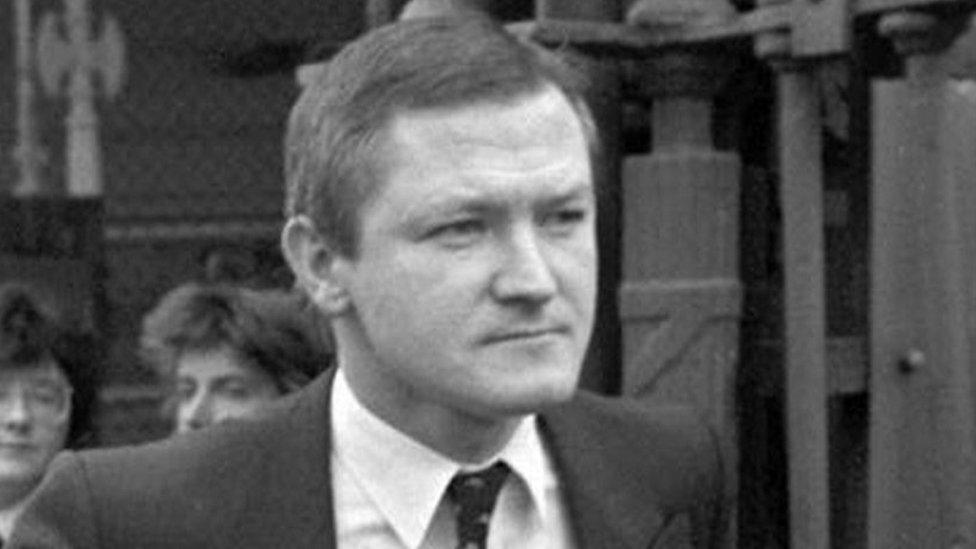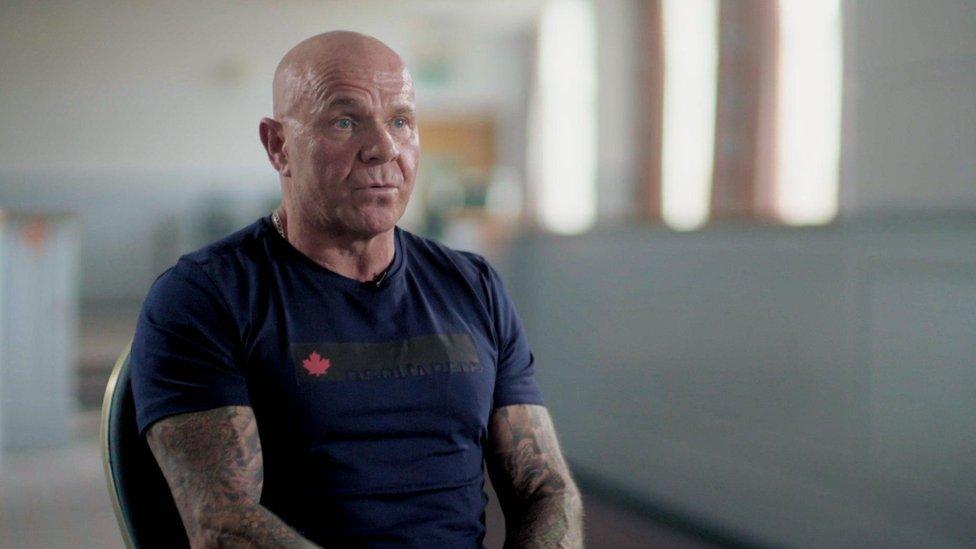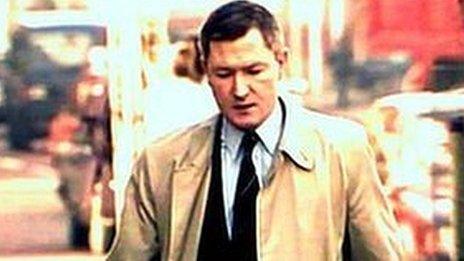Pat Finucane: Security service wiped hard drives
- Published

Pat Finucane, a 39-year-old solicitor, was shot dead in front of his wife and children in 1989
The security service MI5 wiped secret information from computer hard drives being held by an inquiry examining the murder of solicitor Pat Finucane.
Retired Canadian Judge Peter Cory, head of the inquiry, complained to police and feared a diplomatic incident.
In 2004, he recommended a public inquiry into the killing, but one has yet to be held.
Mr Finucane's family believes state collusion in his murder went to the top of government.
The prominent solicitor was shot dead by loyalists at his home in north Belfast in 1989.
Details of a visit by MI5 to Judge Cory's London offices in 2002 - corroborated by the inquiry's senior counsel - are contained in a BBC Spotlight programme.
MI5 told his staff they were removing all the inquiry's hard drives in the interests of national security.
They were erased before being returned.

Geraldine Finucane has been campaigning for a public inquiry into her husband's death
BBC Spotlight was told MI5 was concerned the inquiry's computer system was insecure and a leak could expose the identities of informers.
Judge Cory raised MI5's intervention with the Commissioner of the Metropolitan Police, Sir John Stevens, but decided against pursuing the matter to prevent a diplomatic incident.
The judge had printed back-up copies of the material and believes nothing was ultimately lost.
'Cabinet eyes only'
Mr Finucane's widow, Geraldine, said: "I was told that papers marked 'cabinet eyes only' involved the collusion and the killing of my husband.
"There is something there that needs to be exposed," she told the programme.
BBC Spotlight also reveals that the late Willie Frazer, the campaigner for victims of republican violence, had a role in distributing weapons to loyalist paramilitary groups.
The automatic rifles had been brought into Northern Ireland from South Africa in 1987 by Ulster Resistance.
The weapons were used to murder at least 70 people.

What was Ulster Resistance?

Ulster Resistance was launched in Belfast's Ulster Hall in 1986
Ulster Resistance was a loyalist paramilitary-style group set up in protest against the 1985 Anglo-Irish Agreement, external.
Unionists were angered by the deal which, for the first time, gave the Irish government an official consultative role in Northern Ireland's affairs.
Ulster Resistance was launched during a large rally in the Ulster Hall in Belfast on 10 November 1986.
The rally was addressed by the then leader of the Democratic Unionist Party (DUP) Ian Paisley, as well as senior DUP members Peter Robinson and Sammy Wilson.
Further rallies followed in towns across Northern Ireland and Mr Paisley and Mr Robinson were both photographed wearing red military-style berets at Ulster Resistance events.
The DUP publically cut its links with Ulster Resistance in the late 1980s after members of the group were linked to the importation of weapons into Northern Ireland.
In 1988, 10 people were arrested after police found a suspected Ulster Resistance weapons dump in County Armagh.
The following year, three men were arrested in Paris over an alleged Ulster Resistance plot to exchange British missile secrets for South African guns.
All three men were convicted of arms trafficking and were given fines and suspended sentences.
A number of South African diplomats were expelled from Britain and France after the missile plot was uncovered.

A police report on the activities of the former UDA boss Johnny Adair states he was receiving weapons from Ulster Resistance in the early 1990s.

Former UDA boss Johnny Adair states he was receiving weapons from Ulster Resistance in the 1990s
His contact in Ulster Resistance was Willie Frazer.
Spotlight on The Troubles: A Secret History can be viewed on BBC iPlayer here
- Published7 October 2019

- Published26 September 2019
